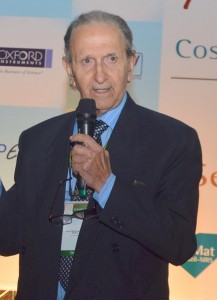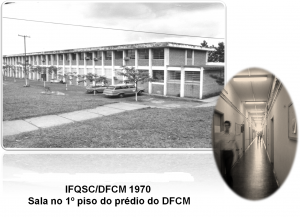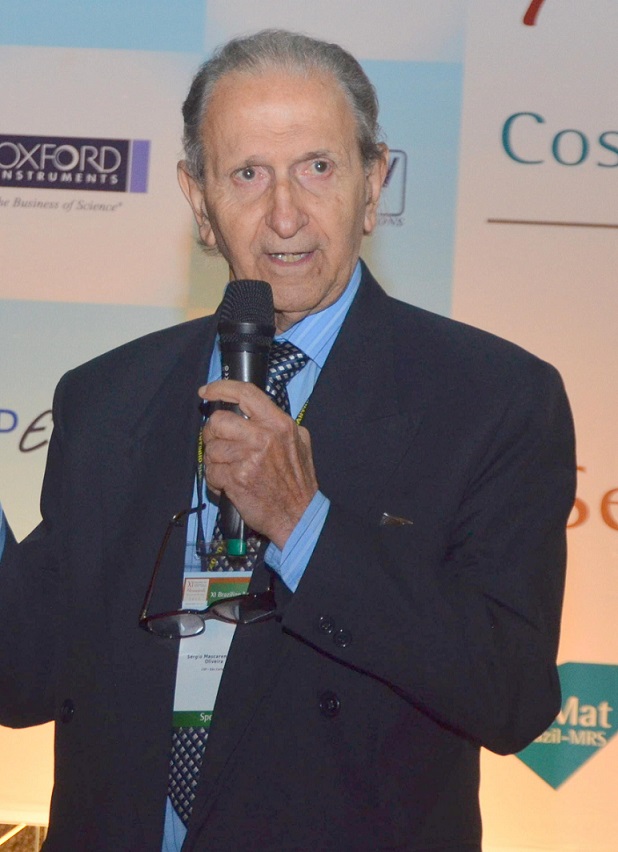2014 is a celebration year for one of the protagonist institutions of the history of Materials research in Brazil. The São Carlos Institute of Physics (IFSC), from University of São Paulo (USP), celebrates its 20th anniversary.
However, the origins of IFSC and its contributions to Brazilian Materials Science and Engineering date back to 60 years ago. “From its origins, IFSC had a central role in the development of Materials Science and Engineering, since Materials research was present with the pioneers of IFSC,” says Professor Antonio Carlos Hernandes, IFSC dean from 2010 to 2014 and researcher in the field of Materials.
The beginning of the history can be set in 1953, when USP, which had been founded in 1934, opened a teaching and research facility in the then small city of São Carlos, in the heart of the state of São Paulo. It was the School of Engineering of São Carlos (EESC), which exists to the present. At the time, the dean of the school, Theodoreto Souto, mandated to form a team of lecturers and researchers, recruited professors to São Carlos, mainly in São Paulo (USP), in Rio de Janeiro and abroad, but failed for them to settle in town for long.

From Rio de Janeiro, the first to integrate the EESC professors’ team was physicist Armando Dias Tavares, assistant of Joaquim da Costa Ribeiro in the Physics laboratories of the National School of Philosophy of the University of Rio de Janeiro (now Federal University of Rio de Janeiro, UFRJ). Then, collaborators and students of Dias Tavares, who had learned to do science in the “school” of Costa Ribeiro and Bernhard Gross (main pioneers of Materials research in Brazil) left the “marvelous city” to the inland of São Paulo, invited by Souto. Among them, the newly graduated in Physics and Chemistry and honeymooners Sergio Mascarenhas Oliveira and Yvonne Primerano Mascarenhas – a couple who leaved an important legacy in the history of Materials Science and Engineering in the region and in the country – arrived in São Carlos in 1956.
At a time when most of the human and material resources for research in Physics, in the world and in Brazil, were intended for Nuclear and High Energy Physics, the Mascarenhas couple chose to start studies in Condensed Matter Physics, field they had worked with Costa Ribeiro in Rio de Janeiro. Documents prepared by IFSC state that Sergio and Yvonne saw two possibilities in that area for the group of São Carlos: to internationally stand out in a field where there was less competition, and to generate applications that had a positive impact on the region’s economy and quality of life of its population.
Thus, in the 1960s, Sergio Mascarenhas created the Condensed Matter Physics Group. “Thanks to a very strong exchange between USP in Sao Carlos, and the universities of Princeton and Carnegie Mellon in the United States, and also groups from England and Germany, mainly in Stuttgart, we managed to establish a very intense research training program, which continues to this day”, Mascarenhas commented in an interview granted in 2013 to the SBPMat Newsletter. Among the works with the greatest impact conducted at the time by the São Carlos group, it is possible to mention research related to defects in crystals, such as ionic crystals with a color core, which were later used for optical memories.
In the late 1960s, a new teaching and research institution, the Federal University of São Carlos (USFCar), was created in town, with the effective participation of professors of the EESC group. In particular, Sergio Mascarenhas, who was the first dean (pro tempore) of the university, proposed the creation of the first graduate course in Materials Engineering in Latin America, seeking to build a bridge between Materials Science and the generation of products, processes and services. The course started its activities in 1970.
In another pioneering initiative in the Materials field, the São Carlos group, with Sergio Mascarenhas as head of the organization, hosted the Brazilian community of solid state physicists (then consisting of about 50 researchers) in town to conduct the “First National Symposium on Solid State Physics and Materials Science “in a small shed.

As a result of the growth, institutionalization and gain of autonomy trodden by Mascarenhas and colleagues of the São Carlos group, in 1971 the Institute of Physics and Chemistry of São Carlos (IFQSC) was created, and the first dean was Mascarenhas himself. IFQSC had from its very beginning a Department of Physics and Materials Science, and a Department of Chemistry and Molecular Physics. Another step was taken in 1994 when IFSC was dismembered, giving rise to the Institute of Chemistry of São Carlos (IQSC) and IFSC, whose first dean was Yvonne Primerano Mascarenhas.
Another milestone in the part of IFSC in the history of Materials research in Brazil was the creation, in 1993, of the inter-unit program in Materials Science and Engineering at USP São Carlos. Managed by IFSC, the program brings together professors of this Institute, IQSC and EESC, as well as researchers from other institutions in the region.
Action with academic and social impact
Besides participating in the inter-unit program, IFSC has one of the most acknowledged and applied postgraduate programs in Physics in the country, which has obtained, since its creation, full marks in assessments from the Federal Agency for the Support and Evaluation of Graduate Education (CAPES). Within its master’s and doctorate, it is possible to perform research in a wide range of topics, including several possibilities in the Materials field, from fundamental research in Condensed Matter Physics to studies on semiconductor materials, polymers, ceramics and glass. Also in the Materials field, IFSC currently has consolidated research groups, for example, the Polymer Group of “Professor Bernhard Gross,” and is home to large projects such as National Institutes of Science and Technology (INCTs) and Research, Innovation and Dissemination Centers.
However, the impact of academic performance of the São Carlos group in the Materials field has exceeded the limits of the city of São Carlos. According to Professor Antonio Carlos Hernandes, the first consequence of this performance was the graduation of doctors (PhD) who began to operate in such field in other higher education institutions. “Thus, many university and research centers operating in Materials today have the IFSC training on their DNA”, says Hernandez.
“IFSC brings together what is essential to the quality of Materials research, with equipment and people with experience in various types of materials,” says Professor Osvaldo Novais de Oliveira Junior, deputy dean of IFSC for the period 2012- 2016. Relying on these features, Novais adds, hundreds of masters and doctors graduated in Materials, many of which have become leaders of research groups in all regions of Brazil. “These leaders of various institutions, as well as others who are part of IFSC, currently play an important role in organizing the Materials community in the country, acting in the Brazilian Materials Research Society (SBPMat), coordinating events and national and international cooperation programs, and formulating public policies”, he adds.
But the impact of IFSC’s performance in the Materials field goes beyond the academic environment. Professor Hernandes highlights, among other examples, the creation of technology-based companies located in the city of São Carlos. “These high-tech companies originated from IFSC researchers work, often involving Materials research”, professor Novais states, which also brings up another type of social contribution made by professors and researchers of the institute, the “tireless work of popularization of science, with various programs for students of primary and secondary education, as well as for the general public. “

